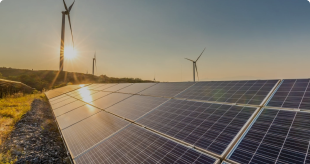Rational use of electricity allows households to reduce their bills and contribute to saving expensive energy resources, especially during wartime. Since electricity is often generated using natural gas or coal, efficient use helps reduce their consumption. This can be achieved by using household appliances wisely.
When choosing electrical appliances, pay attention to energy efficiency labels, which indicate how efficiently the appliance uses energy during operation.
Energy efficiency classes for household appliances range from A to G:
Class A++ – most energy-efficient;
Classes A+, A, B, C, D, G – progressively less energy-efficient.
Purchasing appliances of class A or A+ can reduce electricity consumption by 30–50%. For example, a refrigerator with this rating can save up to 30–50% of electricity compared to a refrigerator rated B.
Electricity consumption of common appliances:
Air conditioner – 2.2–3.37 kWh
Electric kettle – 2.2–2.4 kWh
Vacuum cleaner – 2 kWh
Water heater – 1.5–2.5 kWh
Oil-filled or fan heater – 1.5–2 kWh
Iron – 1–2.4 kWh
Washing machine – 0.8–1.14 kWh
Two-door refrigerator – 0.77–0.90 kWh
Microwave oven – 0.7–1.5 kWh
Single-door refrigerator – 0.10–0.40 kWh
TV – 0.08–0.14 kWh
100 W electric lamp – 0.1 kWh
Computer – 0.065–0.45 kWh
We offer a few simple tips, following which will allow you to use electricity more efficiently and, accordingly, save money and conserve energy resources.
1. Save on lighting:
Install energy-saving lamps at home. Energy-saving lamps last 5–8 times longer than regular incandescent lamps while consuming 10 times less electricity.
If possible, install dimmers and sensors that automatically turn lights on and off when people are present, reducing electricity consumption.
2. Turn off appliances you are not using:
Turn off lights when leaving a room.
Do not leave appliances in “sleep mode.”
For example, TVs in standby mode consume about 9 kWh per month, computers – 3.6 kWh.
The total standby energy consumption of household appliances can reach 350–400 kWh per year.
3. Place lighting fixtures correctly:
Use spotlights in “work areas” instead of ceiling or wall lights; spot lighting is much more economical than illuminating the entire room from a central fixture.
4. Operate appliances correctly:
Refrigerator:
Do not place the refrigerator near the stove or heating appliances; high temperatures increase compressor load, leading to higher electricity consumption. Keep at least 5 cm from the wall. Incorrect placement increases electricity use by 30%.
Do not place in direct sunlight.
Regularly defrost and clean freezer and refrigerator compartments to reduce energy consumption.
Washing and dishwashing machines:
Load to the maximum allowed and select the correct washing temperature. Partial loads consume the same amount of energy as full loads, and 90% of energy is used to heat water. Extra electricity consumption with partial loads is 10–15%.
Kettle:
Boil only the required amount of water and regularly descale. A kettle with limescale conducts heat 30 times worse.
Iron:
Start ironing clothes that require lower temperatures first, then increase temperature for other items.
Water heater:
Set to the optimal temperature; too high increases energy use and appliance load.
Do not turn off the heater, as maintaining temperature consumes less energy than heating from zero.
Turn off the electric water heater only if it will not be used for a long time; in standby, it consumes energy automatically for water heating.
Electric stove:
Use flat-bottomed cookware matching or slightly larger than the burner (saves 5–10% electricity).
Air conditioner:
Operate only with closed windows and doors.
Interesting facts:
A 100 W lamp burning 12 hours daily for a year requires 180 kg of coal, emitting 425 kg of CO₂.
Reducing hot water consumption by 50 liters per day saves 100 liters of fuel oil annually.
High-quality thermal insulation in buildings ensures energy savings and a comfortable indoor climate. Energy losses through cold walls account for 40–70% of total heating needs.








